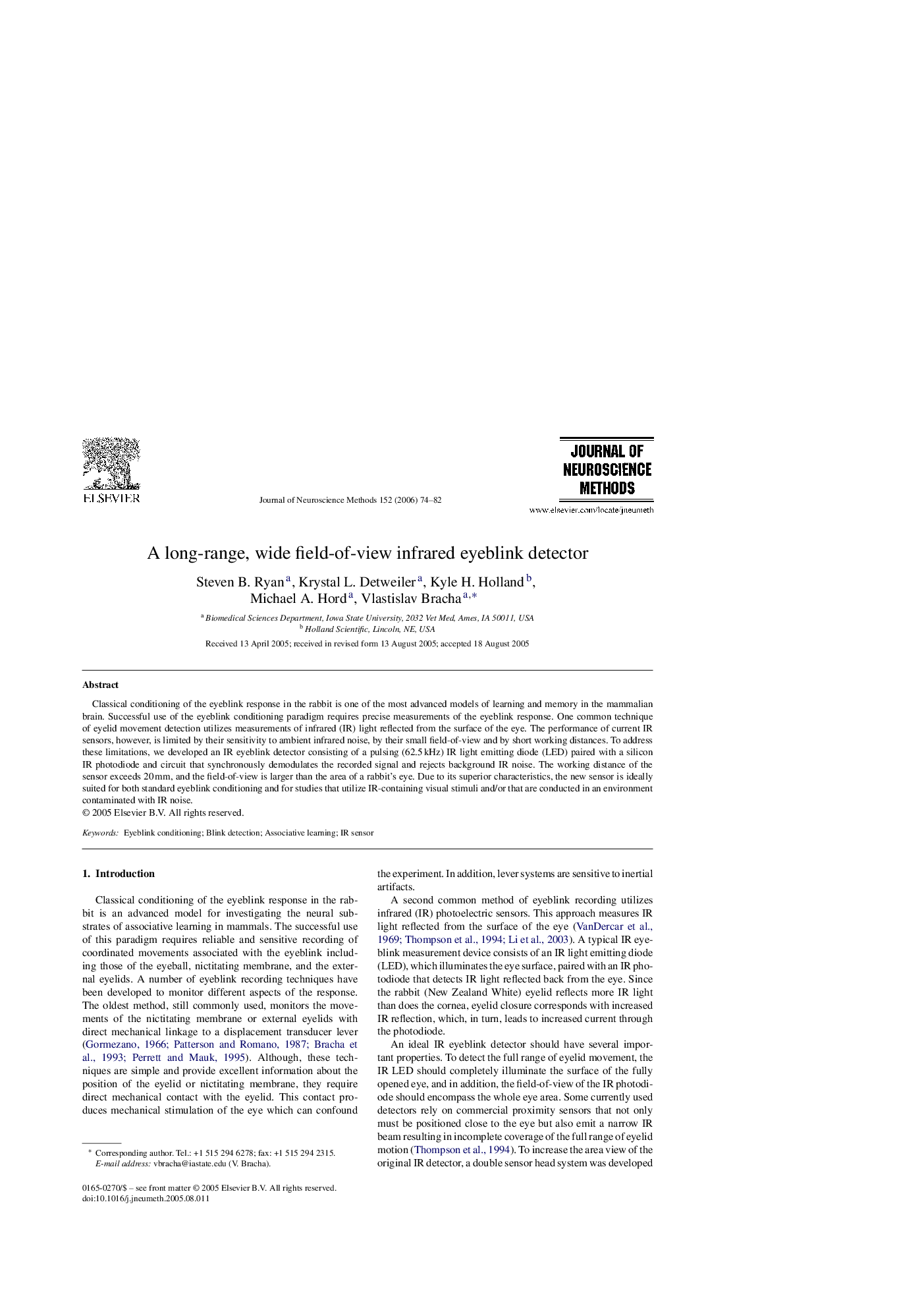| کد مقاله | کد نشریه | سال انتشار | مقاله انگلیسی | نسخه تمام متن |
|---|---|---|---|---|
| 4337021 | 1614660 | 2006 | 9 صفحه PDF | دانلود رایگان |

Classical conditioning of the eyeblink response in the rabbit is one of the most advanced models of learning and memory in the mammalian brain. Successful use of the eyeblink conditioning paradigm requires precise measurements of the eyeblink response. One common technique of eyelid movement detection utilizes measurements of infrared (IR) light reflected from the surface of the eye. The performance of current IR sensors, however, is limited by their sensitivity to ambient infrared noise, by their small field-of-view and by short working distances. To address these limitations, we developed an IR eyeblink detector consisting of a pulsing (62.5 kHz) IR light emitting diode (LED) paired with a silicon IR photodiode and circuit that synchronously demodulates the recorded signal and rejects background IR noise. The working distance of the sensor exceeds 20 mm, and the field-of-view is larger than the area of a rabbit's eye. Due to its superior characteristics, the new sensor is ideally suited for both standard eyeblink conditioning and for studies that utilize IR-containing visual stimuli and/or that are conducted in an environment contaminated with IR noise.
Journal: Journal of Neuroscience Methods - Volume 152, Issues 1–2, 15 April 2006, Pages 74–82